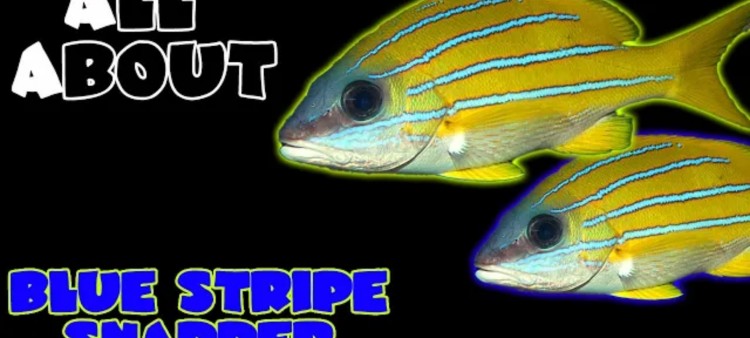All About the Blue Stripe Snapper
- Jul 10, 2022
- Anshika Mishra
- 678 0 0

In this article, we will learn about the Blue Stripe Snapper, aka Blue Line Sea Perch.
Price: You'll have to spend about $50 to get one of these in your tank at a decent size.
Tank Size: You will need a huge aquarium for these as they do get huge, and they are also very active swimmers. So, you want to give them plenty of room to thrive, for which you will need about a 300-gallon fish tank by the end of their life span.
Care Level: They are a straightforward fish to care for. Snappers usually are very hardy fish, they are great for beginners, and they are also perfect eaters too. They love meaty food, and they are the first ones in the tank to eat food, and sometimes they can even take control and overeat.
So, you'll have to sneak them over some food while feeding on the opposite side of the tank.
Temperament: They are usually very peaceful fish; you won't have to worry about too much bullying. With your fish, it is best to put them with other larger fish that can hold their own because they have been prone to eating smaller fish as they get older. So, you don't want to put them with a school of Chromies because they will see those as a snack eventually.
But aggression-wise, they don't mess with others in the tank.
Reef Compatibility: With Caution. They do not mess with your corals, you should not mess with your coral, but they are prone to eat your inverts; they will see those as a snack.
Origin: They come from all around the world. They are one of the most widespread snappers in the ocean; you can find them in Fiji, Indonesia, Maldives, and Hawaii.
Water Parameter
- Temperature: 72-78
- dKH: 8-12
- pH: 8.1-8.4
- Salinity: 1.020-1.025
Appearance
Maximum Size: They eventually can get 10-inches long, which is a big snapper. So, you want to have that larger tank ready. Usually, you see them get up to about 7-inches at least whenever they are grown in an aquarium setting. But, if you have a school swimming around, you want them to have a larger tank to handle the waste they produce.
Colors: Colors are big reasons why so many people want them. They have a bright white belly with a yellow body and colorful blue stripes running along them. So, they'd catch your eye, and they look great under some friendly LEDs.
Diet
They are carnivores, and you want to ensure that you feed them plenty of meaty food. You'll want to mix up some Mysis and brine shrimps and krill when they are smaller juveniles.
And as they get more extensive, you can start mixing more significant metier foods like shrimps from the grocery store. People will feed them clams on half shell even to a lot more little squid pieces.
Compatibility
They do best in fowler tanks, even with predatory fish. Usually, fishes are around their size. They also are great at schooling fish and love being multiple in the aquarium.







About author